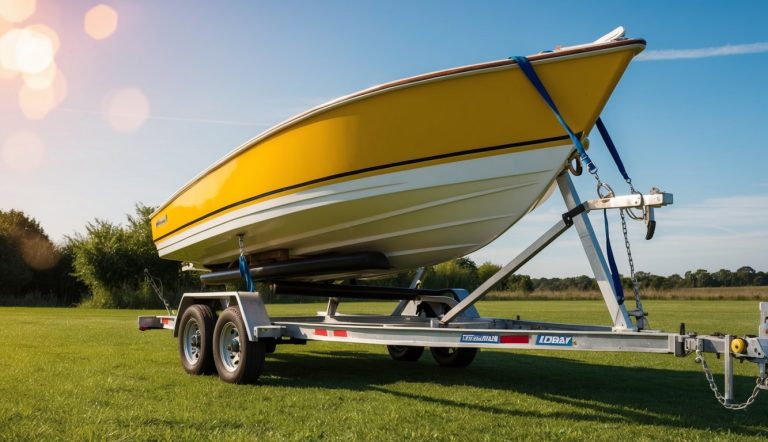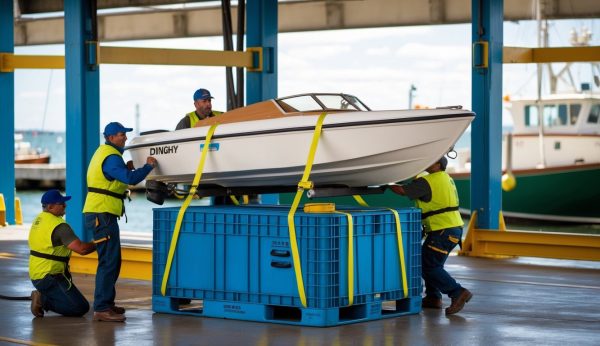Shipping a dinghy can be challenging if you’re not prepared for the process. Many boat owners make simple mistakes that lead to stress, damage, or extra costs. Knowing the common errors in dinghy transport can save you time, money, and headaches while ensuring your boat arrives safely at its destination.
When planning to move your inflatable dinghy or small boat, it’s important to understand the proper methods and requirements. From choosing the right transport company to preparing your vessel correctly, each step matters. Taking the time to learn about these potential pitfalls will help you avoid boat shipping mistakes that could otherwise turn your boating adventure into an unnecessary hassle.
1. Overlooking Proper Preparation
- Proper preparation is essential before shipping your dinghy. Many boat owners rush this step, leading to damage during transit and unexpected delays. Taking time to prepare can save you money and headaches later.
- First, remove all personal items and loose equipment from your dinghy. Items can shift during transport, causing damage to your boat or getting lost. Double-check compartments for electronics, life jackets, and other removable gear.
- Drain all water from the dinghy completely. Standing water adds unnecessary weight and can cause damage during transport. This includes checking bilges, compartments, and any other areas where water might collect.
- Clean your dinghy thoroughly before shipping. This prevents mold growth during transit and makes it easier to spot any damage that might occur. A clean boat also helps transporters handle your vessel more carefully.
- Secure or remove any detachable parts. Items like seats, oars, and small outboard motors should be properly secured or shipped separately. Failing to properly secure these components can result in costly damage.
- Document your dinghy’s condition with clear photos before shipping. This provides evidence of its pre-shipping state if you need to file an insurance claim later.
2. Ignoring Shipping Regulations
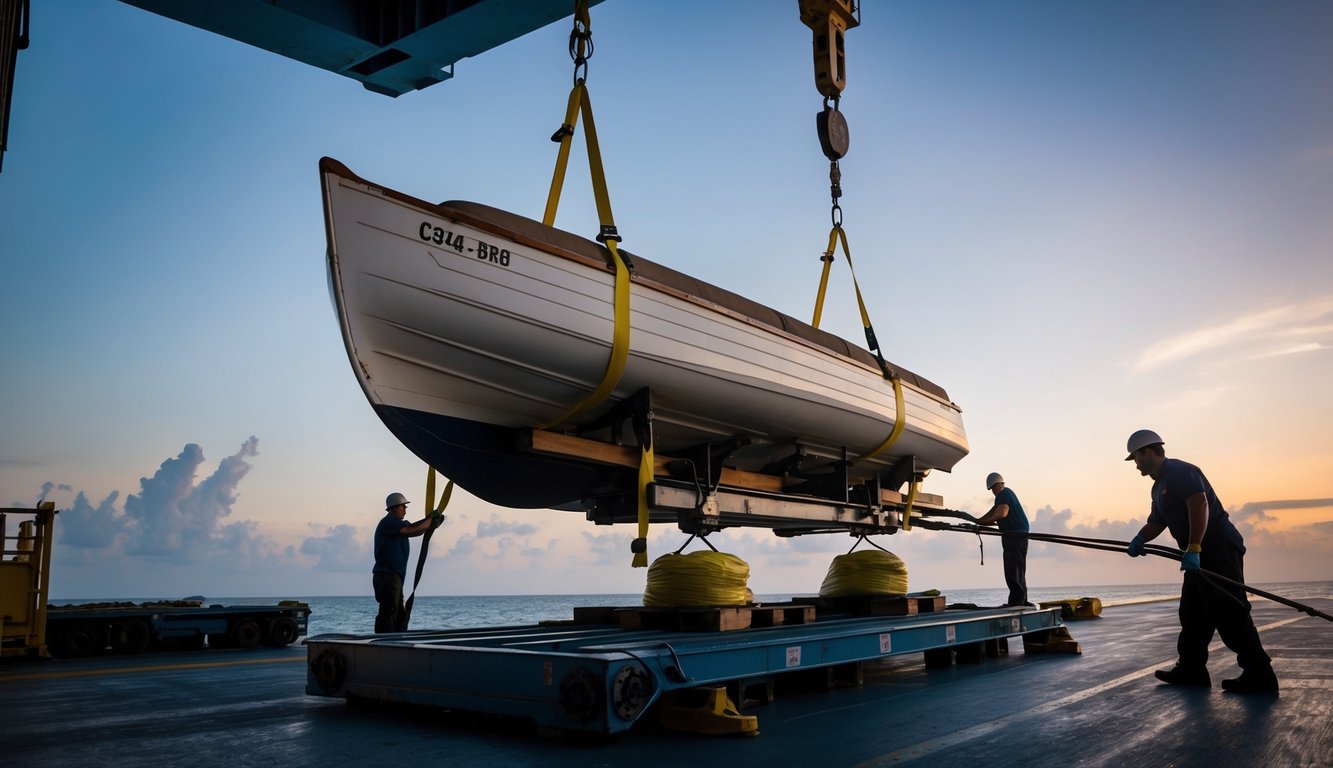
- When shipping your dinghy, one of the biggest mistakes you can make is disregarding shipping regulations. These rules exist for good reason and ignoring shipping regulations can lead to delays, fines, or even confiscation of your vessel.
- Different states and countries have specific requirements for boat transport. You need to research the regulations for each area your dinghy will travel through during its journey.
- Proper documentation is essential. Make sure you have all necessary paperwork ready before transport begins, including proof of ownership and any required permits.
- Size and weight restrictions are strictly enforced on roadways. Underestimating your dinghy’s dimensions can result in your shipment being stopped or rerouted.
- Some areas have environmental protection rules that may require cleaning the hull before transport. This prevents the spread of invasive species between waterways.
- Work with transporters who understand current regulations. Experienced boat shipping companies stay updated on changing laws and can help ensure your dinghy meets all requirements.
- Always check if you need special permits for oversized loads. These usually need to be arranged well in advance of your shipping date.
3. Selecting an Inappropriate Vehicle

- When shipping your dinghy, choosing the right transport vehicle can make or break your experience. Many boat owners make the mistake of selecting vehicles that aren’t suitable for the job.
- A common error is using a vehicle with insufficient towing capacity. Your car or truck must be able to safely handle the weight of both the dinghy and trailer combined.
- Using a vehicle without proper trailer brakes is another risky move. This can lead to dangerous situations, especially when stopping quickly or traveling downhill.
- Some people try to use standard passenger vehicles for boat transport without the right hitch setup. This increases the chance of the trailer becoming disconnected during transit.
- The tow vehicle should also have adequate ground clearance. Low-riding vehicles can struggle with boat ramps and uneven terrain at launch sites.
- Many boaters also overlook proper weight distribution when matching their vehicle to their boat. This can cause swaying and handling problems on the road.
- Remember to check if your vehicle’s cooling system can handle the extra strain. Overheating is common when towing boats in warm weather.
- Choose a vehicle with good visibility or appropriate towing mirrors. You need to clearly see what’s happening behind you during transport.
4. Going for the Lowest Quote
- When shipping your dinghy, it’s tempting to choose the cheapest option available. This common mistake can lead to problems down the road.
- Budget transporters might lack proper equipment or insurance to safely move your vessel. They may also cut corners on securing your dinghy properly during transit.
- The lowest quote often comes with hidden fees that appear later. These can include fuel surcharges, delivery delays, or additional costs for basic services that should be included.
- Quality boat shipping services charge fair rates that cover proper equipment, experienced handlers, and comprehensive insurance. These elements are essential for safe dinghy transport.
- Not factoring in all costs is another aspect of the lowest quote problem. The initial price might seem attractive until you add up extras that premium services include standard.
- Instead of focusing solely on price, look for value. Request detailed quotes that specify exactly what’s included and what might cost extra.
- Remember that your dinghy is a valuable asset. Paying a reasonable rate to a reputable shipper provides peace of mind and better protection for your investment.
5. Failing to Provide Necessary Documents
- When shipping your dinghy, paperwork is critical. Many boat owners forget to gather all the required documents, which leads to delays and frustration.
- The most important document is proof of ownership. Without a title or bill of sale, your dinghy may be held at the shipping facility, costing you extra money and time.
- Insurance documentation is equally important. Ignoring insurance coverage during transport leaves your vessel vulnerable to potential damage with no recourse.
- Transport permits may be required depending on your route. Specific permits are often necessary for boat transport, and failing to obtain them can result in fines or legal issues.
- Create a checklist that includes ownership papers, insurance documents, and permits. Review this list before your scheduled shipping date to avoid last-minute problems.
- Contact your shipping company ahead of time to confirm exactly what paperwork they need. Document oversights can cause significant delays in your shipping timeline.
- Keep copies of all documents in both digital and physical formats. This simple step provides backup if original papers are lost during the shipping process.
6. Ignoring Insurance Coverage
- When shipping your dinghy, one of the most costly mistakes is ignoring proper insurance coverage. Many boat owners assume their regular boat insurance will cover transportation, but this isn’t always the case.
- You should check your existing policy carefully to see if it covers transportation risks. Not all insurance policies are cut from the same cloth, with some covering only specific damages while others might handle total loss.
- Before shipping, contact your insurance provider to confirm what’s covered during transit. This simple step can save you from significant financial stress if something goes wrong.
- Some shipping companies offer their own insurance, but the coverage may be limited. Ask detailed questions about what exactly is covered and under what circumstances.
- Failing to have proper insurance can leave you vulnerable if your dinghy is damaged during transport. Even minor transit damage can be expensive to repair.
- Remember to get all insurance details in writing. This includes coverage limits, deductibles, and the claim process. Having documentation will make things easier if you need to file a claim later.
7. Improper Loading Techniques
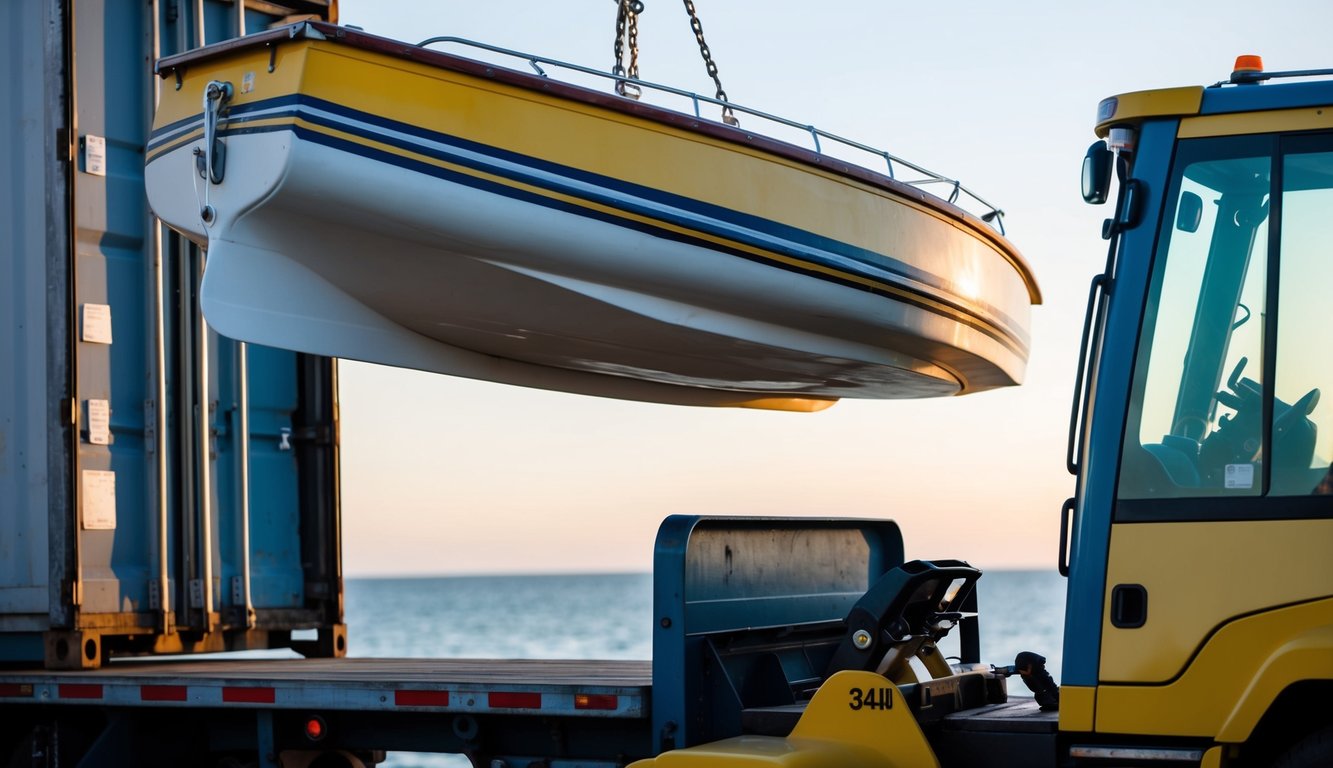
- When shipping your dinghy, how you load it onto the trailer or transport vehicle can make all the difference. Many boat owners make the mistake of not distributing weight properly, which can lead to dangerous situations on the road.
- Failing to center your dinghy on the trailer is a common error. This uneven weight distribution can cause the trailer to sway or even flip during transport, especially at highway speeds or in windy conditions.
- Another loading mistake is not securing all loose items inside the boat. Any unsecured equipment can shift during transport, causing damage to your dinghy or creating road hazards if items fall out. Securely pack all loose items before transport.
- You should also check that your dinghy is properly supported on the trailer. Missing or improperly positioned rollers or bunks can create pressure points that damage the hull during transit.
- Don’t forget to double-check all connections between your dinghy and the trailer. Attach safety chains or cables as backup security measures to prevent complete separation if the primary attachment fails.
- Be careful not to overload your trailer beyond its weight capacity. Exceeding weight limits strains your vehicle and trailer, creating unsafe driving conditions.
8. Overlooking Weather Conditions
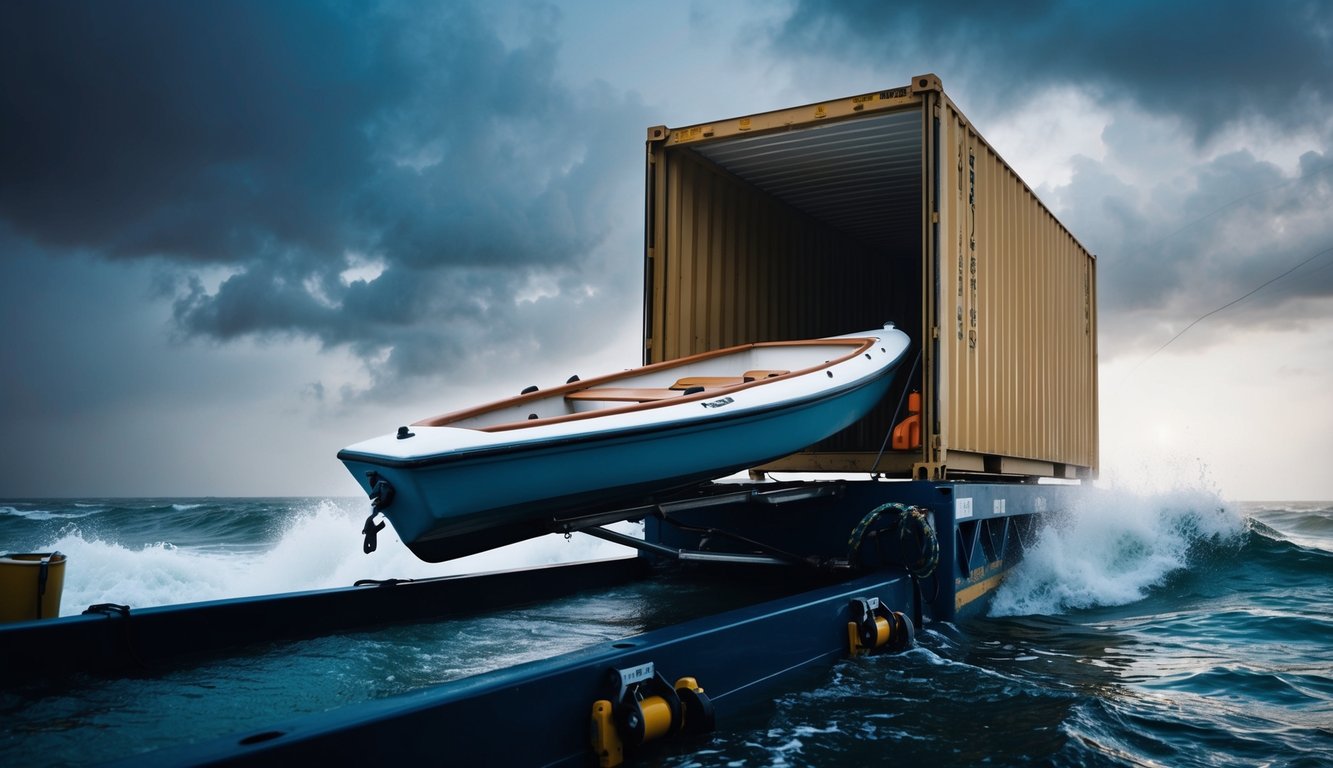
- Weather plays a crucial role when shipping your dinghy. Many boat owners forget to check the forecast before scheduling transport, which can lead to serious problems.
- Strong winds can make transporting your dinghy dangerous. High winds create additional stress on tie-downs and increase the risk of damage during transit.
- Rain and moisture can affect your dinghy during transport. If your boat isn’t properly covered, water can pool in unwanted areas and potentially damage electronics or interior components.
- Heavy rain or snow can also reduce visibility for transporters, increasing accident risks. Poor weather conditions may slow delivery times and potentially increase shipping costs.
- Always check the marine weather forecast before scheduling your dinghy shipment. Try to plan your transport during periods of mild weather when possible.
- If bad weather is unavoidable, ensure your dinghy is properly secured and covered. Work with your shipping company to develop a weather contingency plan.
- Request weather updates from your transporter along the shipping route. Many professional services will adjust their schedule to avoid severe conditions that could put your vessel at risk.
9. Not Checking the Dinghy for Damage
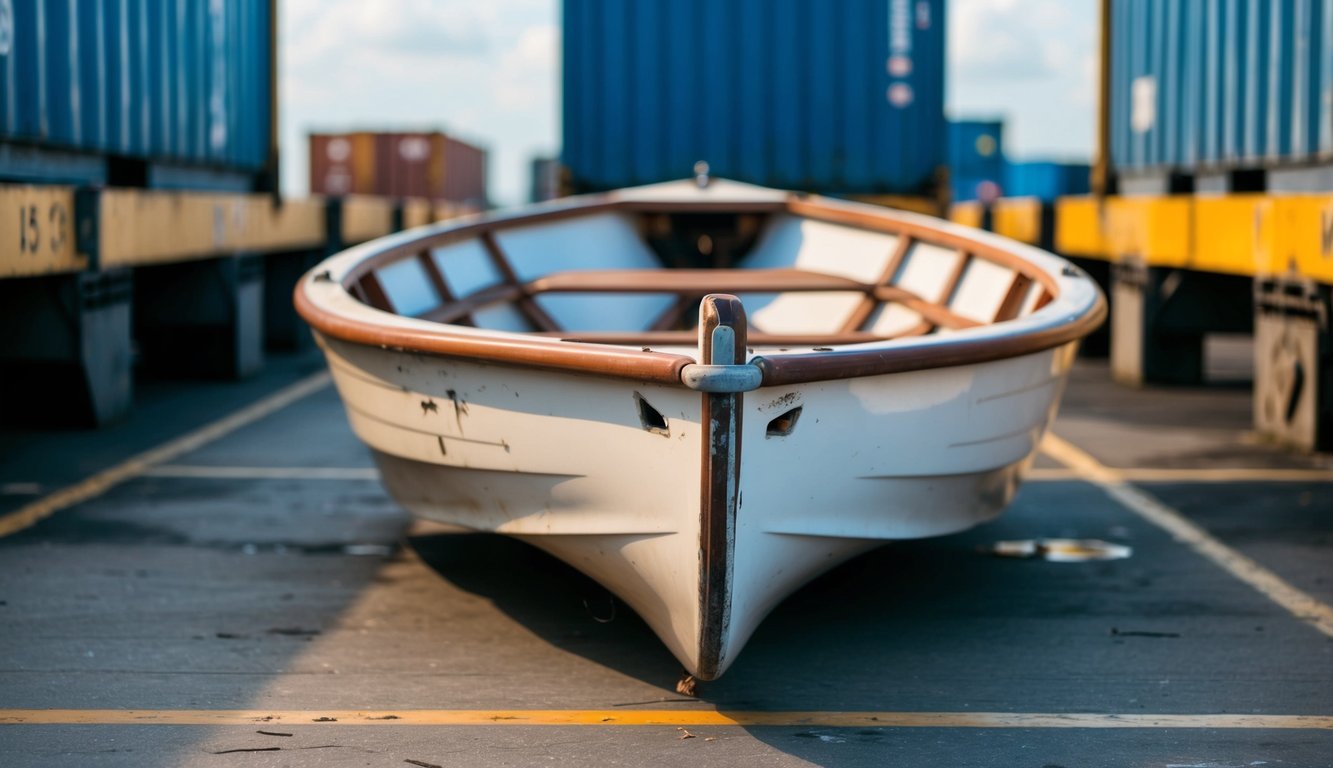
- Before shipping your dinghy, always inspect it thoroughly for existing damage. This simple step can save you from disputes later about when damage occurred.
- Take clear photos of your dinghy from multiple angles before it’s loaded for transport. Pay special attention to the hull, seams, transom, and any accessories like oarlocks or D-rings.
- Don’t forget to check for salt residue or water spots that might seem harmless now. During transport, these can actually damage your dinghy’s exterior if left untreated.
- Look for small cracks or weak spots that might worsen during shipping. The vibration from road travel can turn a minor issue into a major problem.
- Document any existing damage in writing and have the shipping company acknowledge it. This creates a clear record of the dinghy’s condition before transport.
- Check inflation levels if you have an inflatable dinghy. Slight under-inflation is often recommended for transport to account for pressure changes during the journey.
- Remember that improper securing during transport can cause damage, so verify how your dinghy will be fastened during transit.
10. Running Out of Fuel
- Running out of fuel is a common mistake that can leave you stranded on the water. It’s not just inconvenient—it can also be dangerous, especially in rough conditions or remote areas.
- Always follow the rule of thirds when planning your fuel usage. Use one-third of your fuel going out, one-third coming back, and keep one-third in reserve for emergencies.
- Never trust your boat’s fuel gauge completely. Boat gauges can be notoriously inaccurate, especially when the vessel is at an angle or in choppy waters.
- Filling your tank after each trip is a smart practice, even if you’ve only used a small amount. This prevents condensation in the tank and ensures you’re always ready for your next outing.
- If you do run out of fuel, first secure the boat and crew. Make sure everyone is wearing life jackets and stay calm while you call for assistance.
- Consider keeping an emergency fuel reserve on board for situations where you miscalculate your needs. Just make sure it’s stored properly according to safety regulations.
